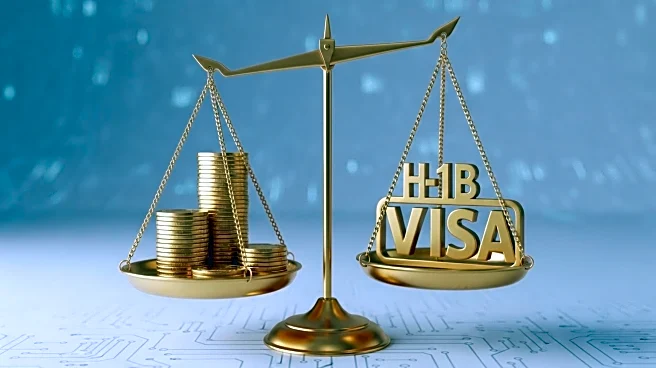What's Happening?
President Trump has proposed a $100,000 fee for H-1B visa applications, a move that is expected to significantly impact U.S. startups and the venture capital space. H-1B visas are crucial for companies seeking to hire foreign workers in specialized fields such as IT, healthcare, and engineering. These visas are already challenging to obtain due to limited annual quotas. Desmond Lim, CEO and co-founder of Workstream, a tech platform for HR and payroll, expressed disappointment as all of his startup's H-1B applications were rejected last year. Lim highlighted the importance of these hires, noting that previous successful applications were transformative for both employees and the company. The proposed fee is seen as prohibitive for early-stage startups, complicating their recruitment strategies.
Why It's Important?
The proposed fee could have a profound impact on the U.S. startup ecosystem, which relies heavily on skilled foreign workers to drive innovation and growth. Startups often operate with limited budgets and resources, making the additional financial burden of the fee a significant obstacle. This could lead to a decrease in the ability of startups to compete for top global talent, potentially stifling innovation and slowing economic growth in sectors reliant on specialized skills. Venture capitalists and startup founders are concerned that this policy could deter foreign talent from contributing to the U.S. economy, affecting the country's competitive edge in technology and other high-skill industries.
What's Next?
The implementation of the $100,000 fee is still pending, with many details yet to be clarified by the White House. Stakeholders in the startup and venture capital communities are likely to lobby against the proposal, seeking to influence policy decisions. If enacted, startups may need to explore alternative recruitment strategies or focus on domestic talent pools, which could reshape hiring practices and industry dynamics. The broader business community will be watching closely to see how this policy unfolds and its potential ripple effects across the economy.










